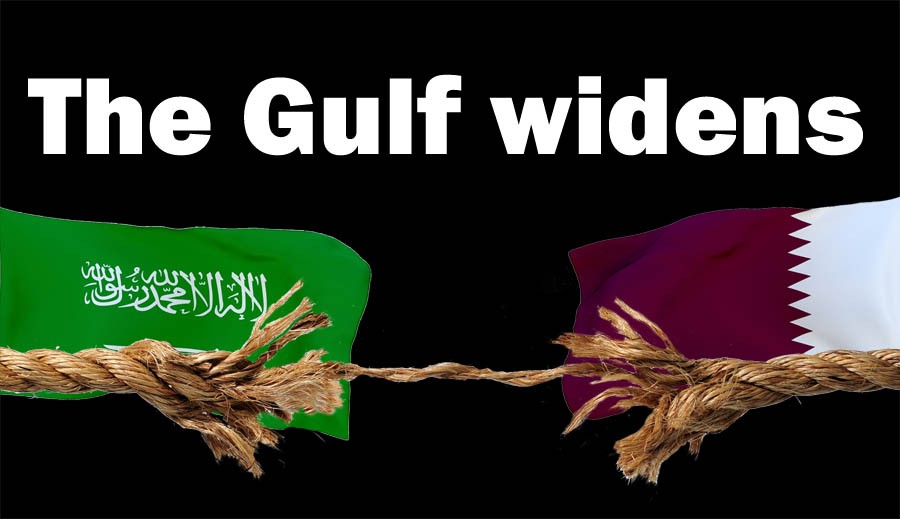
Making an attempt to take stock of the alignments in the wake of the current standoff in the Middle East

In the first week of June, six countries -- Saudi Arabia, the United Arab Emirates, Egypt, Bahrain, Yemen and the Maldives -- declared they were severing diplomatic ties with Qatar. The Saudis claimed they were taking the action for the sake of ‘national security’ and accused Qatar of aiding terrorist and sectarian groups that "aim to create instability in the region". The reference of course is to Qatar’s support for Hamas, Hizbollah and Muslim Brotherhood.
The decision came after the Arab-Islamic-US summit held in Riyadh in May where there were declarations and speeches made against Iran. Interestingly, while no action, diplomatic or otherwise, has been taken against Iran, Qatar has been singled out, bringing the seething differences into the open.
It’s an uncertain situation where the countries in the Muslim world are being made to declare their loyalties to one side or the other in a conflict that is not drawn along any strict sectarian lines. The erstwhile allies of the Islamic Military Alliance have been forced to pledge their allegiances in the new power game set in motion in the region.
Read also: The Gulf widens
As Ayesha Siddiqa suggests, the violence that ensues out of this conflict may not just engulf the Middle East but South Asia as well. For us in Pakistan, the concern is real. As opposed to the rational thinking emerging out of the country’s parliament in 2015 that Pakistan should not take sides in Saudi Arabia’s war against Yemen, we went ahead and became a part of the Saudi-led military alliance. Not just that, against all wise counsel, we allowed the country’s retired army chief to head that alliance.
Now in the current power game between Riyadh and Doha, and having already soured its ties with Tehran, Islamabad is not in a position to side with either one. It is proposing to mediate and end the crisis but it doesn’t look like it is in a position to do that.
In our Special Report today, we have a separate piece on the United States because the policy of the current President is diametrically opposed to the former president Obama’s, especially on Iran. It turns out, however, that the current president is even at odds with his own administration if their recent statements and Tweets on Qatar are anything to go by.
Here is an attempt to take stock of the alignments and realignments in the wake of the current standoff in the Middle East, hoping that it does not turn take a violent turn. As for the solutions, they lie within these analyses.